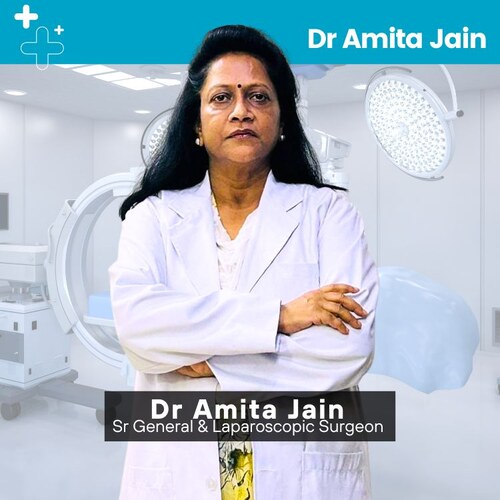Have you been experiencing abdominal discomfort for quite some time accompanied by nausea and bloating? Over-the-counter medicines don’t help anymore? It’s high time you consult a doctor. You may think it is a simple case of indigestion but it could be a severe case of acute cholecystitis which is an inflammation of the gall bladder. It is caused when gallstones present in the gall bladder block the bile duct. The gall bladder is a small, pear-shaped organ located in the upper right part of the abdomen. Its primary function is to store and concentrate bile, a digestive fluid produced by the liver that helps to digest fats.
In such severe cases, doctors recommend their patients undergo cholecystectomy, a surgical procedure to remove the gallbladder. However, like any surgery, there are risks associated with gall bladder removal procedures, too.
Usually, the gallbladder is removed in one of two ways:
1. Laparoscopic cholecystectomy is a minimally invasive procedure, where the organ is removed via several small incisions in the abdomen. 2. Open cholecystectomy is a more invasive surgery where the surgeon makes a single large incision in the abdomen to access the gallbladder. While both procedures carry risks and benefits, laparoscopic cholecystectomy typically has a shorter recovery time and lower risk of infection or complications than open cholecystectomy.
Dr. Amita Jain, the leading laparoscopic surgeon for gallbladder stone removal in India shares her expert advice on the risks of gallbladder removal in this article.
Bleeding (Haemorrhage): Although rare, but bleeding can occur internally, during the surgery as well as externally after the surgery. Severe bleeding can be life-threatening and may require additional surgery or transfusions.
Bile Leakage: During surgery, special clips are used to seal the cystic duct which is the tube that allows bile to flow from the gallbladder to the intestine. If these clips are not properly secured, bile can leak from the cystic duct and cause abdominal pain, nausea, fever, and swelling of the abdomen. Bile leaks can sometimes be drained without further surgery. An operation may be required in more severe cases to drain the bile and wash out the inside of the abdomen.
Bile duct injury: A bile duct can be accidentally cut, burned, or pinched during surgery. This can cause the bile to leak into the abdomen or block the normal flow of bile from the liver resulting in severe abdominal pain, fever, and jaundice. It can be deadly, if not treated on time.
Injury to other organs: Since the gall bladder is located close to the liver, pancreas, and small intestine, there is a risk that the surgeon could accidentally damage these organs during surgery which can lead to further complications. It is especially risky in laparoscopic gall bladder removal since the organs are only visible through a tiny camera. The surgeon has to be very precise in order to avoid damaging any of the surrounding organs.
Digestive problems can occur after gall bladder removal as the bile that is normally stored in the gall bladder can no longer be released into the small intestine. The liver will still produce bile, but it is no longer able to be stored and released as needed. This can lead to an imbalance in the bile in the small intestine which can result in digestive problems such as diarrhoea and constipation.
Deep vein thrombosis: Deep vein thrombosis (DVT) is a condition in which a blood clot forms in the veins of the legs. This is a potential risk of gall bladder removal because the procedure requires the use of general anesthesia, which can increase the risk of blood clots. The clot can travel around the body and could block the flow of blood into the lungs (pulmonary embolism).
Now that you are aware of the risks associated with the surgery, you can make an informed decision.

Dr Amita Jain is one of India’s most distinguished and experienced female surgeons, known for her unmatched expertise in general and laparoscopic surgery. With over 29 years of surgical excellence, Dr Amita Jain has built a reputation for precision, compassionate care, and advanced surgical techniques.
Dr Amita Jain has successfully performed a wide range of complex general surgeries, including both open and minimally invasive procedures, with a strong focus on trauma care, onco-surgical techniques, and reconstructive surgeries. Her areas of specialisation include (including Gallbladder stone removal, appendix removal, hernia repair surgery, piles and fissure surgeries). She was the Professor of Surgery at the Army College of Medical Sciences and Base Hospital, Delhi Cantt. In 1994, she was commissioned asa Surgeon under the United Nations Mission in Congo. From 2020 to 2022, she worked with Bansals Hospital. Currently, Dr Amita Jain is the Senior General and Laparoscopic Surgeon at Rainbow Children Hospitals (Malviya Nagar, Delhi), Artemis Lite: Multi-Speciality Care Hospital (New Friends Colony, New Delhi) and at Rosewalk – Luxury Maternity Hospital in Delhi (Panchsheel Park, Delhi)
Call Us at +(91) 882-6615301
